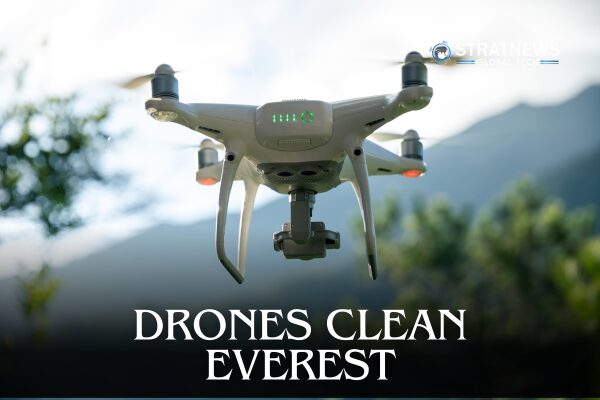Drones Help Clean Everest as They Deliver Gear and Carry Waste
A Nepalese drone company is helping to solve a growing problem on Mount Everest: garbage. Using unmanned aerial vehicles (UAVs) or drones, Airlift Technology delivers vital equipment to climbers and returns with trash from high altitudes.
Tackling the Growing Waste Crisis on Everest
Mount Everest, the world’s tallest peak, faces a severe waste issue. Decades of climbing have left the mountain scattered with torn tents, used oxygen bottles, food wrappers, and even human waste. Despite past clean-up efforts, large amounts of rubbish still remain.
Nepal-based Airlift Technology is taking a modern approach to this old problem. Its drones, built in partnership with Chinese manufacturer DJI, are now flying between Everest Base Camp and higher camps to deliver essential supplies and bring back trash.
In just three minutes, drones like the DJI FlyCart 30 can transport gear such as ropes, ladders, and oxygen bottles from Base Camp (5,364 metres) to Camp 1 (6,065 metres), crossing the dangerous Khumbu Icefall. The same trip takes Sherpa guides six to seven hours on foot, often with great risk.
Safe, Fast and Effective Drone Missions
Company co-founder Milan Pandey explained the simple idea behind the initiative: “Why don’t we clean Mount Everest?” After testing in 2024, the drones successfully removed more than 1,000 kilograms of waste between March and May 2025.
On their return trips, the drones carry down trash left by climbers. Items like empty food packets, used oxygen tanks, and even human waste are removed, helping to reduce pollution on the mountain.
The drones operate with support from the Khumbu Pasang Lhamu Rural Municipality, the Sagarmatha Pollution Control Committee (SPCC), and the Icefall Doctors, who maintain Everest’s climbing route.
Innovation That Saves Lives and the Environment
Nepali mountaineer Nima Rinji Sherpa praised the project, noting that using drones protects lives and simplifies clean-up efforts. He said, “It is humanly impossible to bring all the trash down through the Khumbu Icefall. These drones make it possible.”
With an estimated 50 tonnes of trash still scattered across Everest, Airlift Technology’s work is only beginning. While other clean-up missions, including the Nepalese army’s 2024 campaign, have made progress, drones now offer a powerful new solution.
Since Everest was first climbed in 1953, over 7,000 people have reached its 8,850-metre summit—many more than once. Airlift Technology hopes that its drones can help preserve the mountain for future generations.
with inputs from Reuters


